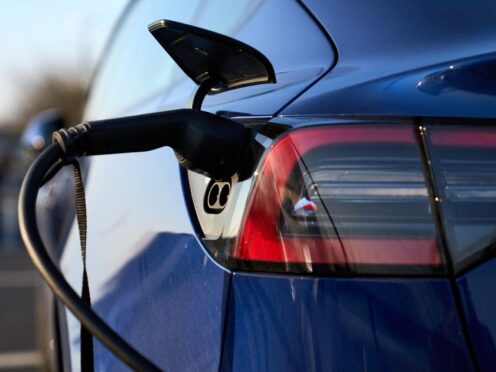Households with insulation and clean tech such as heat pumps and electric cars are more “energy patriotic” as they rely far less on imported fuels, a think tank has claimed.
Analysis from the Energy and Climate Intelligence Unit (ECIU) found homes using heat pumps, insulation and electric vehicles make more use of British energy and use less than half the imported fuel of a household reliant on gas and petrol.
People who want to be “energy patriotic” should be buying British by switching from gas boilers and petrol cars to cleaner alternatives that run on electricity increasingly powered by domestic wind and solar energy, ECIU suggested.
And the Government should help those who cannot afford to invest in new technology by agreeing more contracts for new UK wind farms, ensuring homes can buy British for more of the power they use for appliances and lighting, the think tank argued.
ECIU analysis found a typical household with a gas boiler, petrol car and average electricity demand relies on imports of energy, mostly gas and oil, for nearly 70% of its total needs, around 17 megawatt hours (MWh) a year.
But a house with good levels of insulation, using a heat pump and an electric car will use less than half that level of energy imports (45%), at around 7.5 MWh a year, from gas used in electricity generation.
Homes with solar panels as well would use around a third (36%) of the fuel imports of a typical home, at just 6MWh a year, the analysis said.
ECIU looked at the use of oil and gas imports alone, rather than “net imports” which balances the amount of energy the UK brings in against the amount produced and exported, to give what it said was a more detailed view of the country’s reliance on imported fuels.

Jess Ralston, energy analyst at the ECIU, said: “Those who want to be ‘energy patriotic’ and buy British homegrown energy should be switching from gas boilers and petrol cars to electric heat pumps and EVs that increasingly run on British wind and solar energy.
“As North Sea oil and gas output continues its inevitable decline, the dependence on foreign imports for households using boilers and internal combustion cars will only become more stark.
“Generating more British renewable energy and using it to power heat pumps and electric cars would get households, and the UK as a whole, off energy imports and remove the risk of the kind of price volatility we’ve seen in recent years.
“The Government has increased the grant for heat pumps, but then cut other policy under intense lobbying pressure from gas boiler manufacturers which likely means fewer heat pumps sold, leaving households and the UK more dependent on foreign gas.”
A Department for Energy Security and Net Zero spokesperson said: “Nearly half of all homes in England now have an EPC rating of C or above, up from just 14% in 2010, and we’re supporting families make the switch to heat pumps, rather than forcing them, with our £7,500 heat pump grant – one of the most generous schemes in Europe.
“At the same time, we’re taking the common sense approach to reduce our reliance on imports by backing domestic gas production, which is four times cleaner than liquefied natural gas imports from abroad.”
